Your 100s of Plastic Bags Can Make a HUGE Difference!
Remember the article on all the ways to use that abundance of plastic bags we have kickin’ around the kitchen, that I shared a few months ago? Well, a talented reader, Vicky Strauss, answered the question I posed at the end of the article, “How do YOU use your extra plastic bags?” Her ideas are so remarkable that I thought they should be shared.
The first thing Vicky suggests we do is make them into tote bags. They’re washable, strong, lightweight, and roomy. You can pack several of these inside one, then use them to replace the grocery store shopping bags you bring home every week.
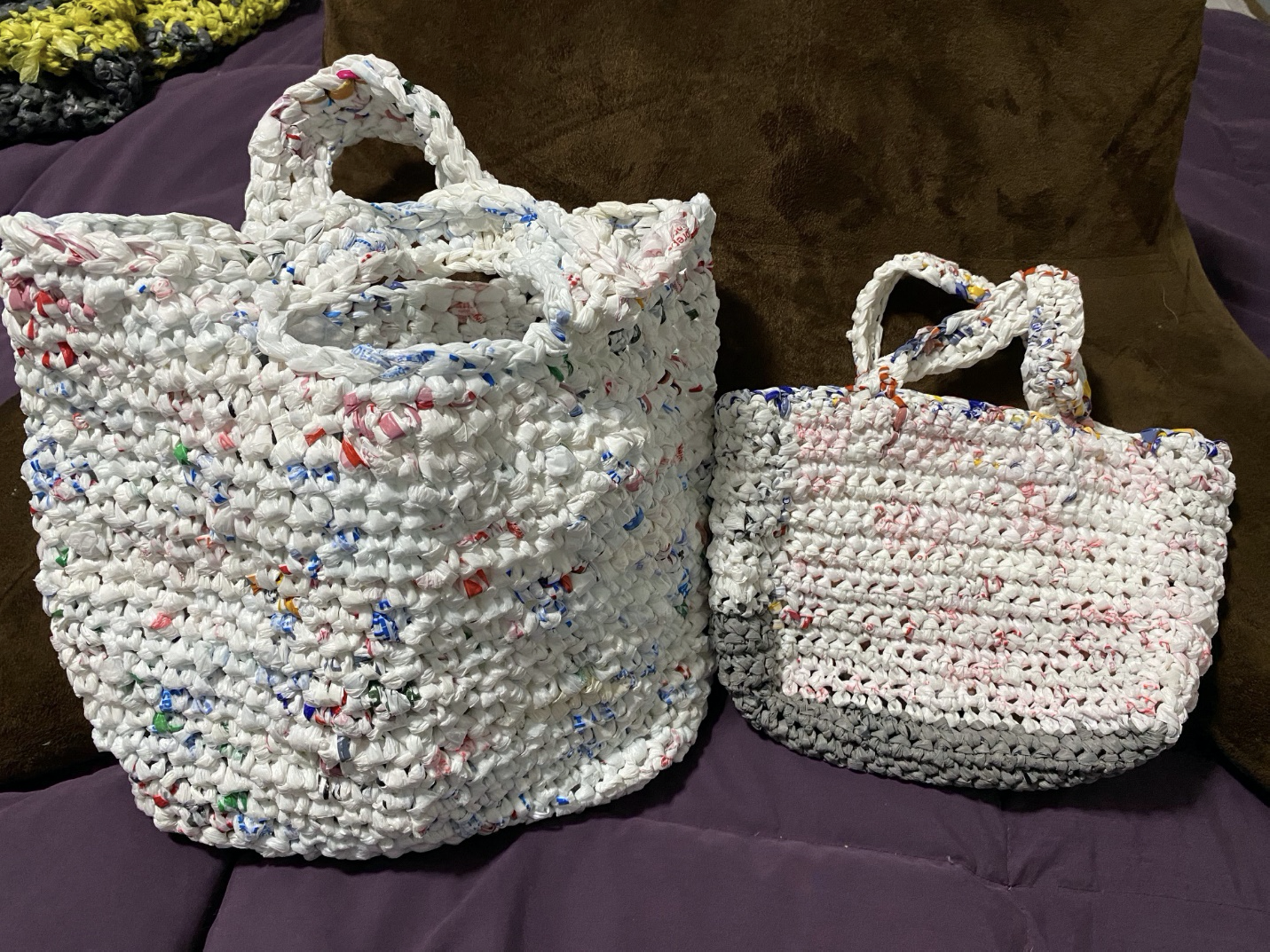
You can see from the photos that it’s possible to create a color palette and a distinct design for each bag, depending on the number of bags you have in various color families. From a distance they almost look as thought they’re made from bulky yarn. Vicky’s bags are knitted as well as crocheted.
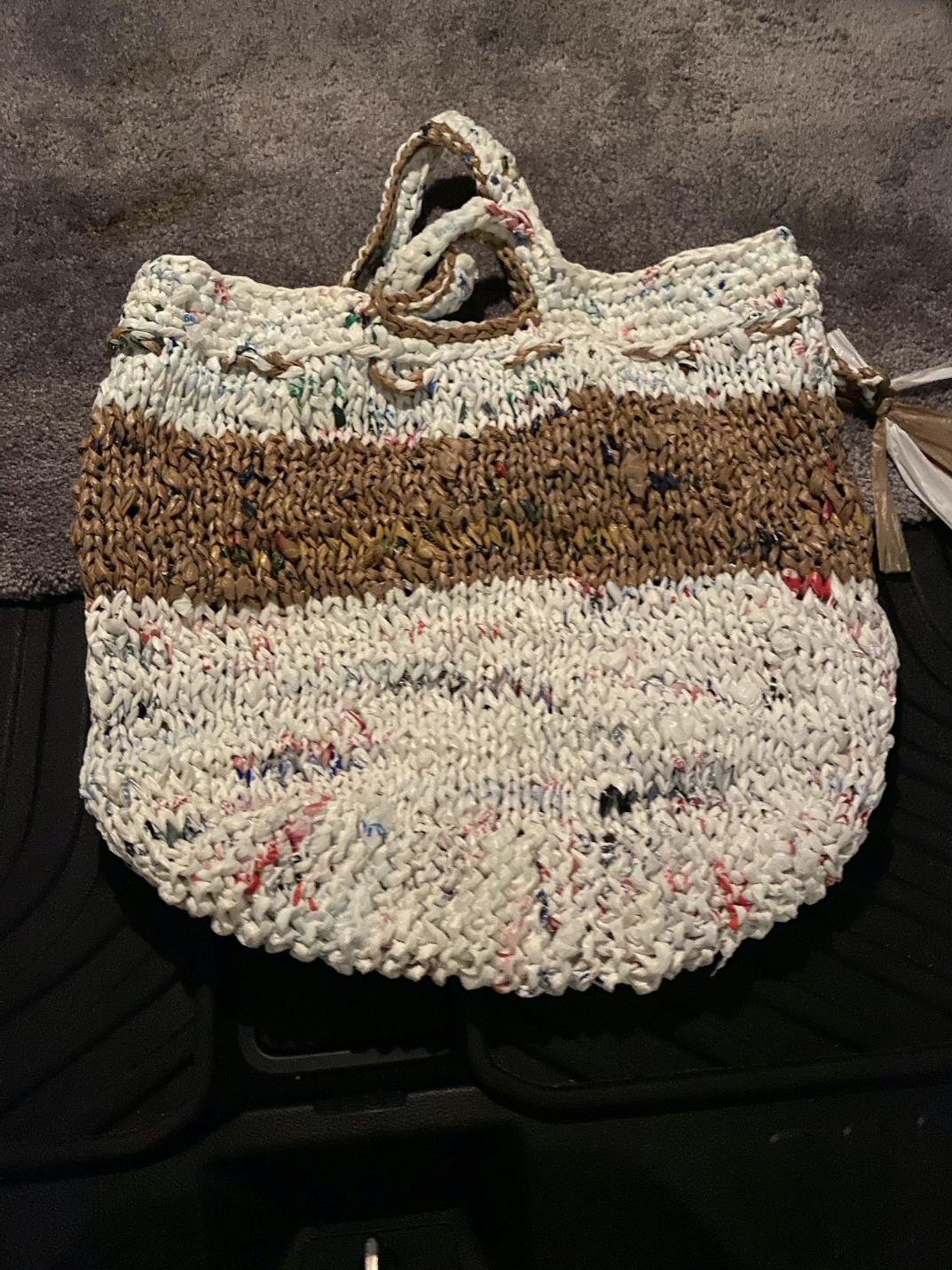
But as cool as it is to make tote bags from free plastic bags, here’s an even cooler idea. One that actually addresses a crucial need in most communities. For this idea you need to keep collecting those grocery store plastic bags. Even ask your friends to save them for you.
I’m talking about making portable sleeping surfaces for those people experiencing homelessness. These mats provide an insulating layer from the ground. They can prevent a person from getting cold and are even so effective that they can possibly prevent hypothermia (a common problem the homeless experience).
They are lightweight, easy to clean, and they don’t attract bedbugs or lice (another very common problem the homeless experience). They have self-ties and a carry strap for easy portablility.
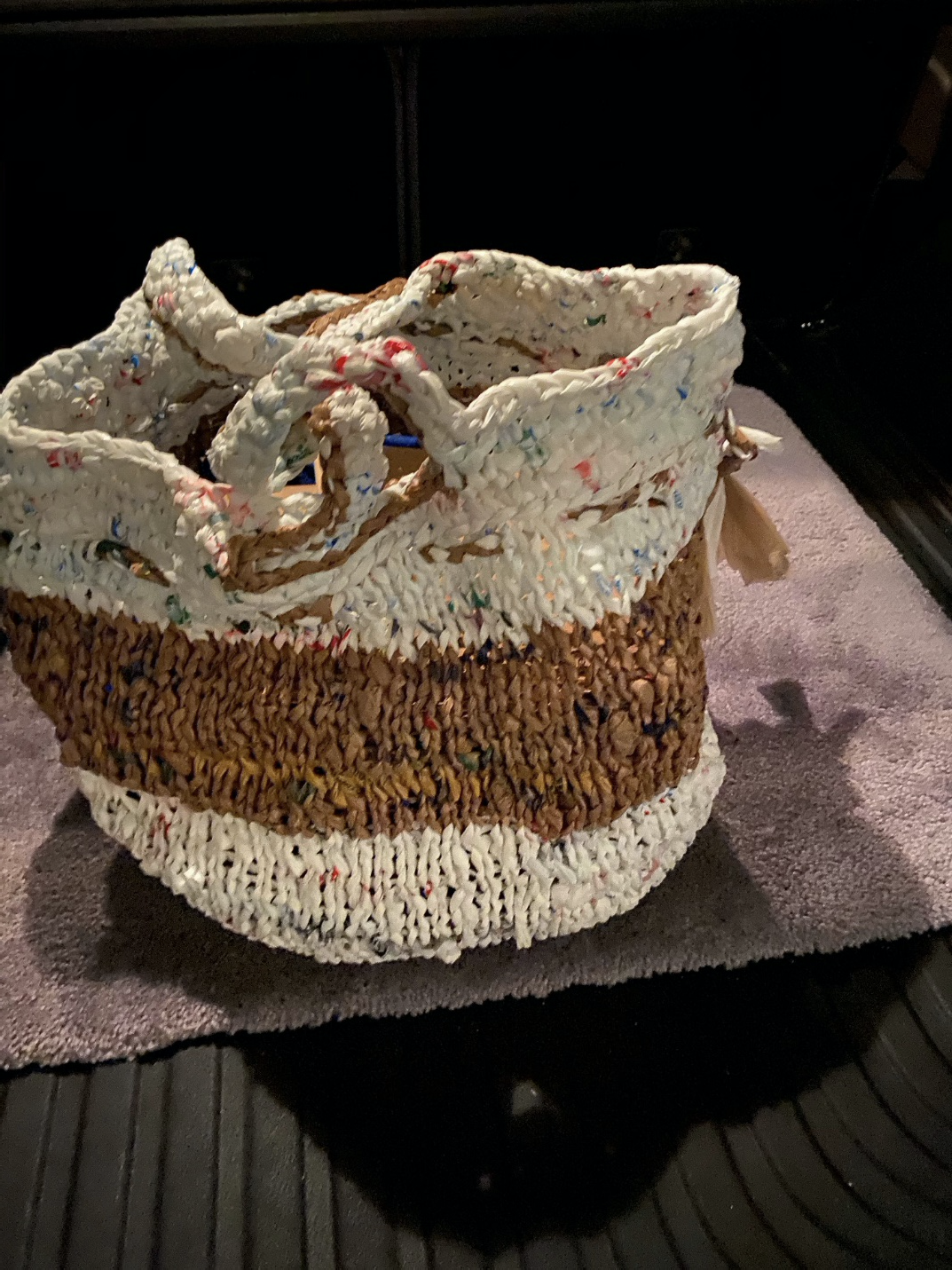
They’re made from “plarn,” a conglomerate word meaning PLASTIC BAG YARN. All you need to make plarn is a pair of scissors or a rotary cutter. A cutting mat would make the job go quicker and easier and is recommended, but not necessary.
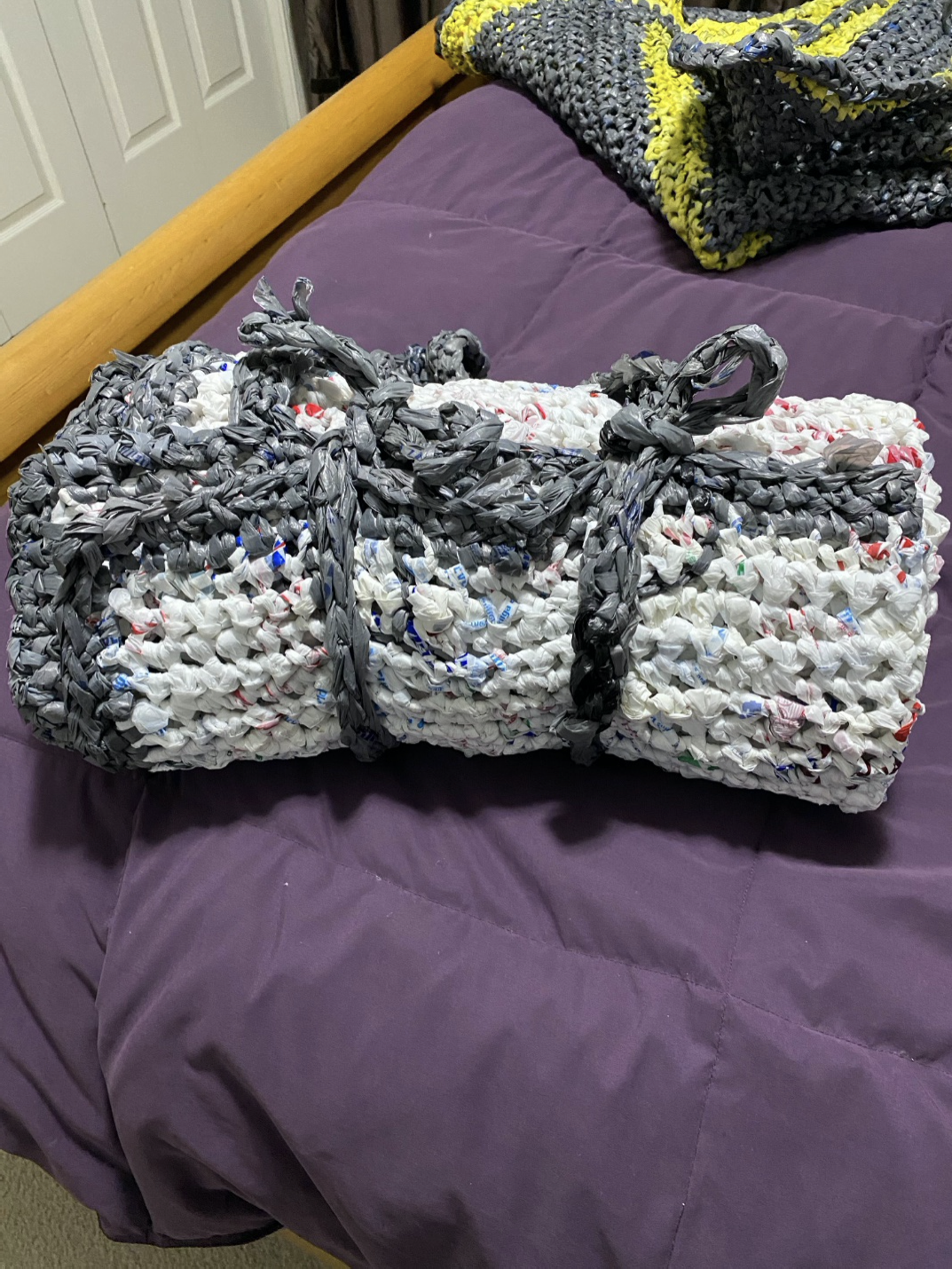
Vicky provided this link so you can hear more about these mats and actually see how to make the plarn and how to crochet the mat.
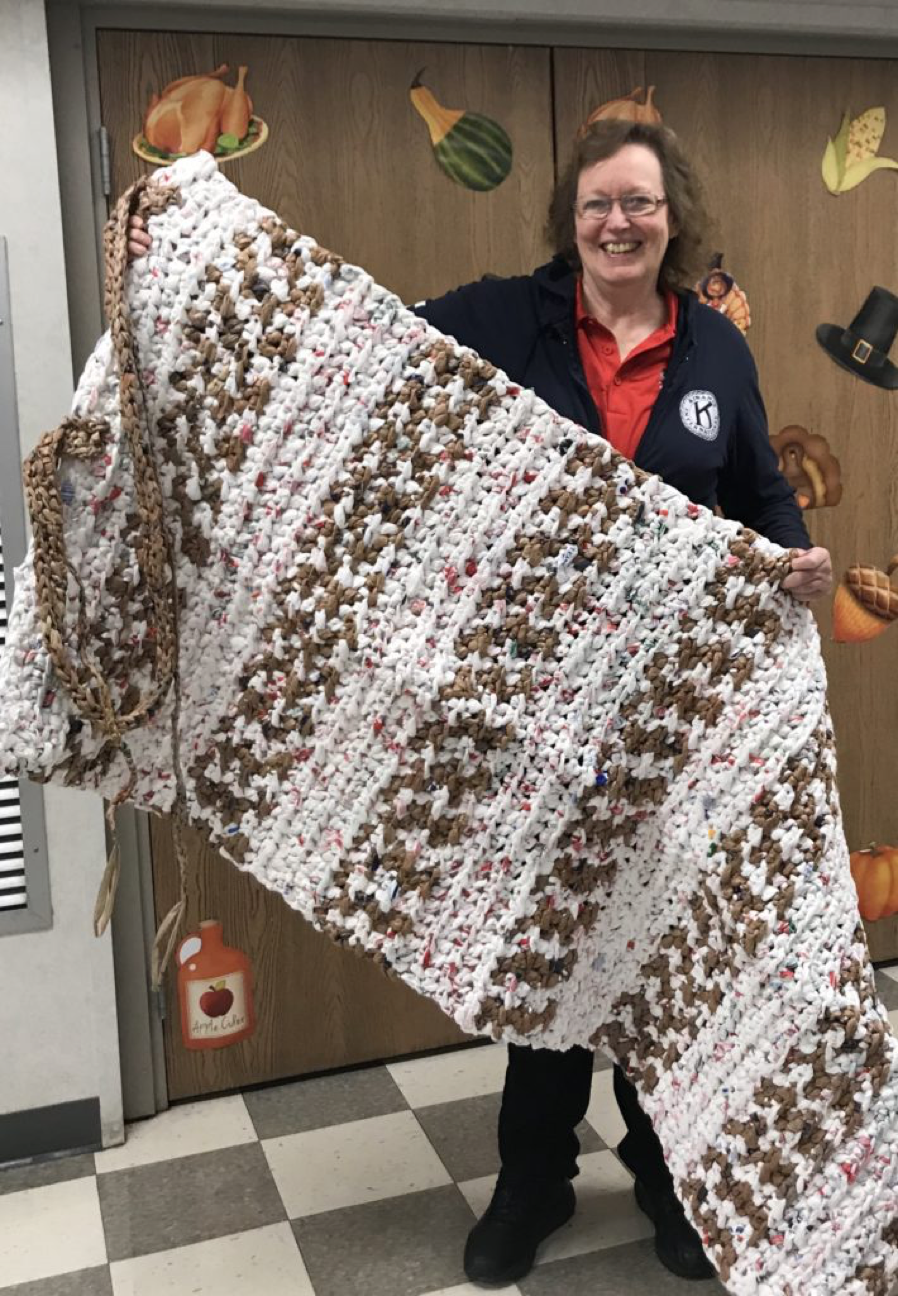
Seventeen out of every 10,000 people in the United States were experiencing homelessness on a single night in January 2019 during HUD’s Annual Point-in-Time Count. These 567,715 people represent a cross-section of America. They are associated with every region of the country, family status, gender category, and racial/ethnic group. You can be sure the number is much higher today, given the disastrous employment issues this Covid 19 pandemic has created.
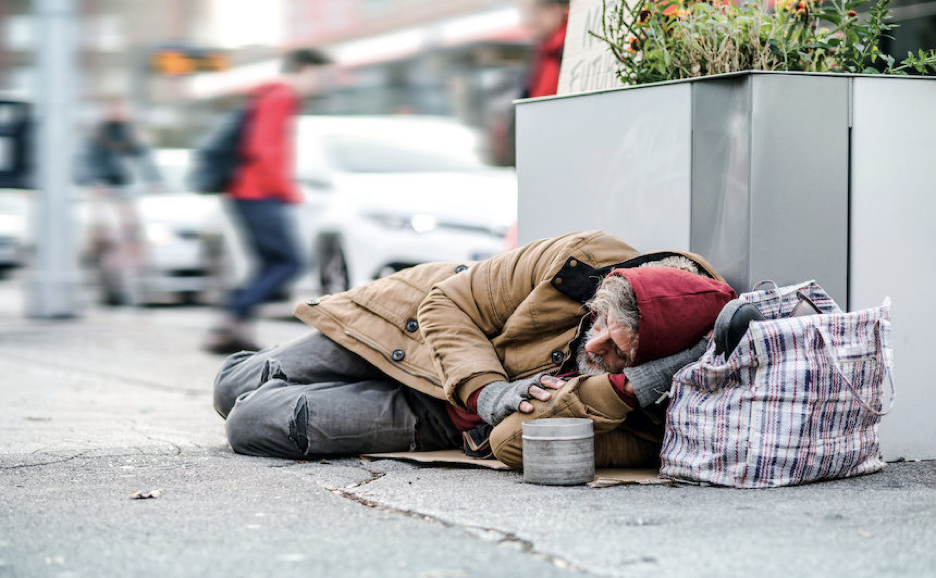
And more than 200,000 people (37 percent of the overall population) in America sleep outside and in other locations not meant for human habitation. Among individuals experiencing homelessness, the numbers are more dire—1 in 2 are unsheltered.
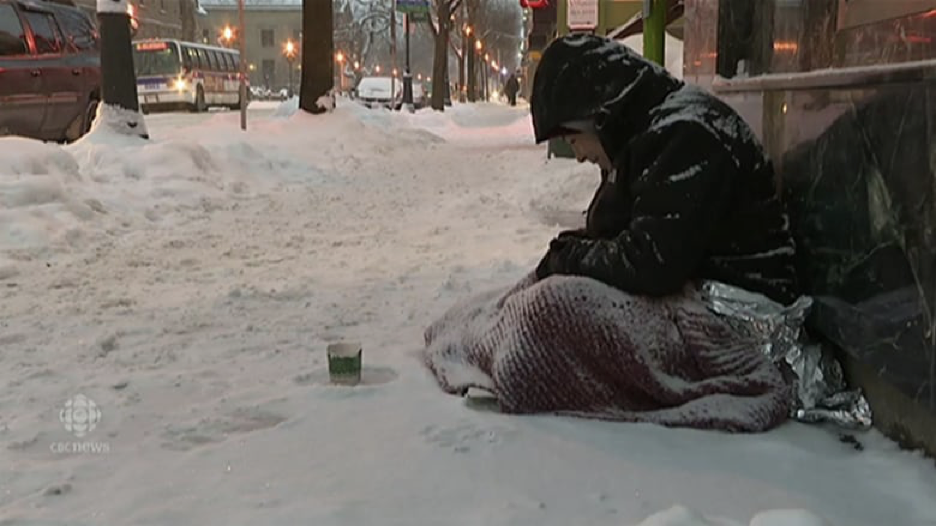
I was overwhelmed with emotion when I read Vicky’s response to my question. What a kind and generous use of her time she’s giving. Homelessness is a crisis that can leave us feeling overwhelmed and even hopeless. We know this is wrong, and it hurts our hearts; we want to do something to help, but what would really make a difference? Vicky’s idea, providing portable sleeping surfaces, is one way we can easily provide an answer to an immediate and critical need.
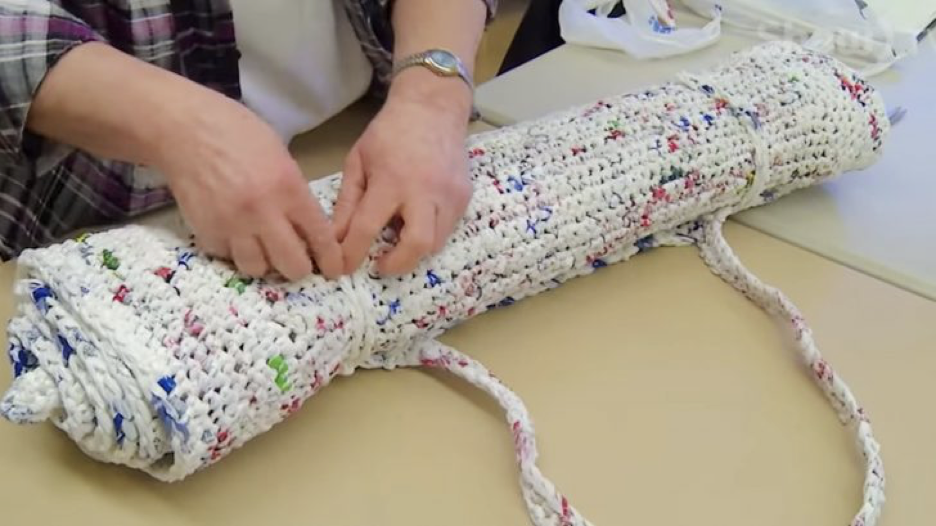
I know this is a cooking newsletter, but I felt sure you wonderful Cook’n readers would forgive my digression, especially at this time of year. I hope you had a lovely Thanksgiving and continue to live in gratitude. As we thank Heaven for all our blessings (not the least of which is shelter and a warm bed), may we go into the Christmas season seriously considering following Vicky’s lead so the poor and needy will have a better place to sleep this winter.
The first thing Vicky suggests we do is make them into tote bags. They’re washable, strong, lightweight, and roomy. You can pack several of these inside one, then use them to replace the grocery store shopping bags you bring home every week.

You can see from the photos that it’s possible to create a color palette and a distinct design for each bag, depending on the number of bags you have in various color families. From a distance they almost look as thought they’re made from bulky yarn. Vicky’s bags are knitted as well as crocheted.

But as cool as it is to make tote bags from free plastic bags, here’s an even cooler idea. One that actually addresses a crucial need in most communities. For this idea you need to keep collecting those grocery store plastic bags. Even ask your friends to save them for you.
I’m talking about making portable sleeping surfaces for those people experiencing homelessness. These mats provide an insulating layer from the ground. They can prevent a person from getting cold and are even so effective that they can possibly prevent hypothermia (a common problem the homeless experience).
They are lightweight, easy to clean, and they don’t attract bedbugs or lice (another very common problem the homeless experience). They have self-ties and a carry strap for easy portablility.

They’re made from “plarn,” a conglomerate word meaning PLASTIC BAG YARN. All you need to make plarn is a pair of scissors or a rotary cutter. A cutting mat would make the job go quicker and easier and is recommended, but not necessary.

Vicky provided this link so you can hear more about these mats and actually see how to make the plarn and how to crochet the mat.

Seventeen out of every 10,000 people in the United States were experiencing homelessness on a single night in January 2019 during HUD’s Annual Point-in-Time Count. These 567,715 people represent a cross-section of America. They are associated with every region of the country, family status, gender category, and racial/ethnic group. You can be sure the number is much higher today, given the disastrous employment issues this Covid 19 pandemic has created.

And more than 200,000 people (37 percent of the overall population) in America sleep outside and in other locations not meant for human habitation. Among individuals experiencing homelessness, the numbers are more dire—1 in 2 are unsheltered.

I was overwhelmed with emotion when I read Vicky’s response to my question. What a kind and generous use of her time she’s giving. Homelessness is a crisis that can leave us feeling overwhelmed and even hopeless. We know this is wrong, and it hurts our hearts; we want to do something to help, but what would really make a difference? Vicky’s idea, providing portable sleeping surfaces, is one way we can easily provide an answer to an immediate and critical need.

I know this is a cooking newsletter, but I felt sure you wonderful Cook’n readers would forgive my digression, especially at this time of year. I hope you had a lovely Thanksgiving and continue to live in gratitude. As we thank Heaven for all our blessings (not the least of which is shelter and a warm bed), may we go into the Christmas season seriously considering following Vicky’s lead so the poor and needy will have a better place to sleep this winter.
Sources:
- www.eastidahonews.com
- www.ounewsbureau.com
- www.cbc.ca
- www.achnews.org
 Alice Osborne
Alice Osborne
Weekly Newsletter Contributor since 2006
Email the author! alice@dvo.com
